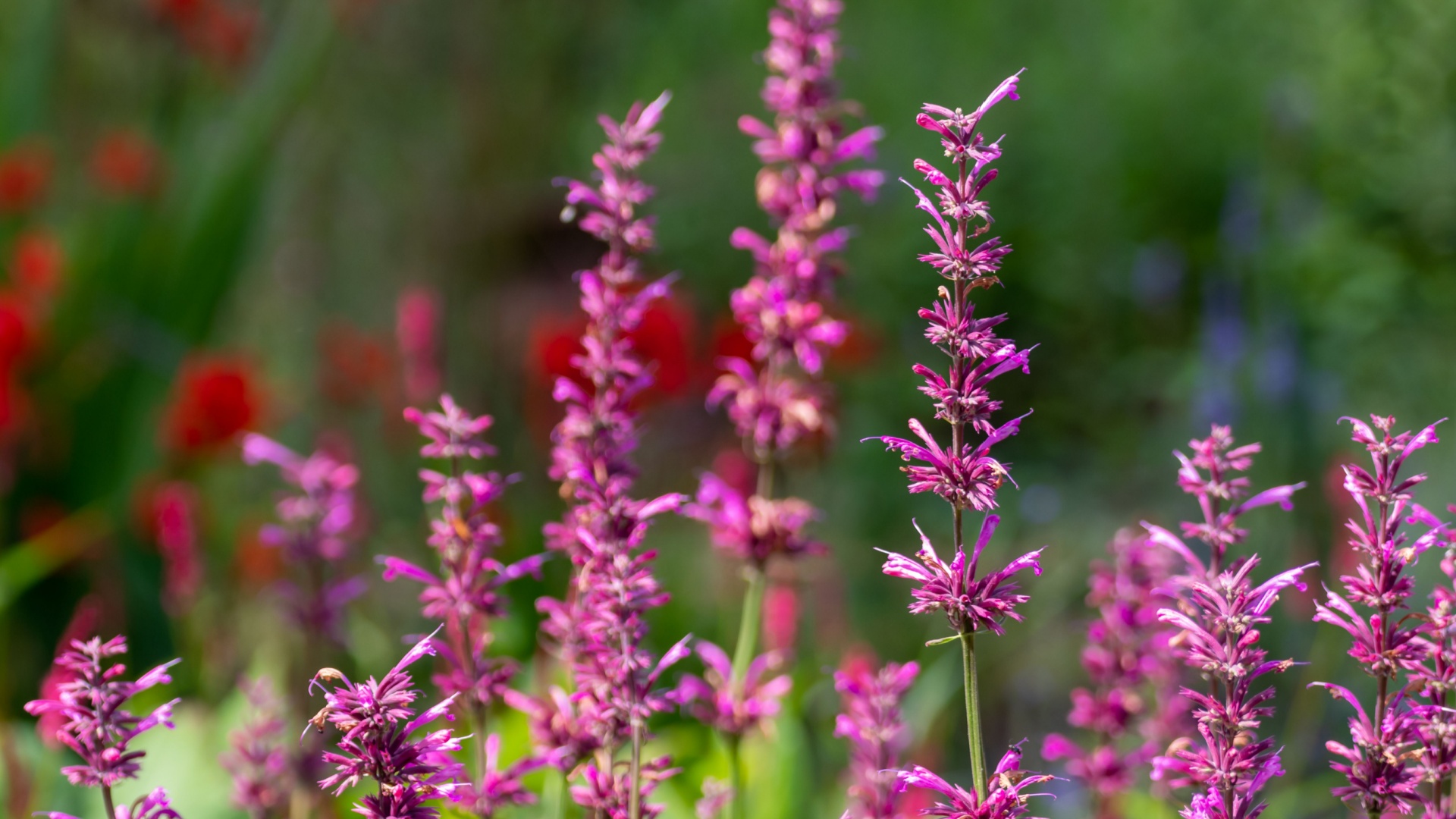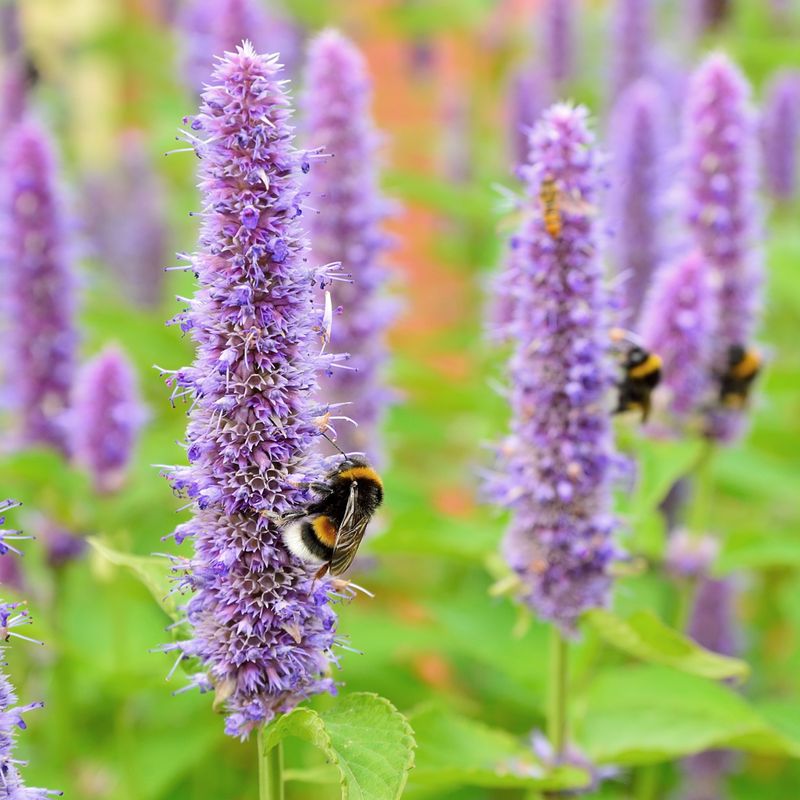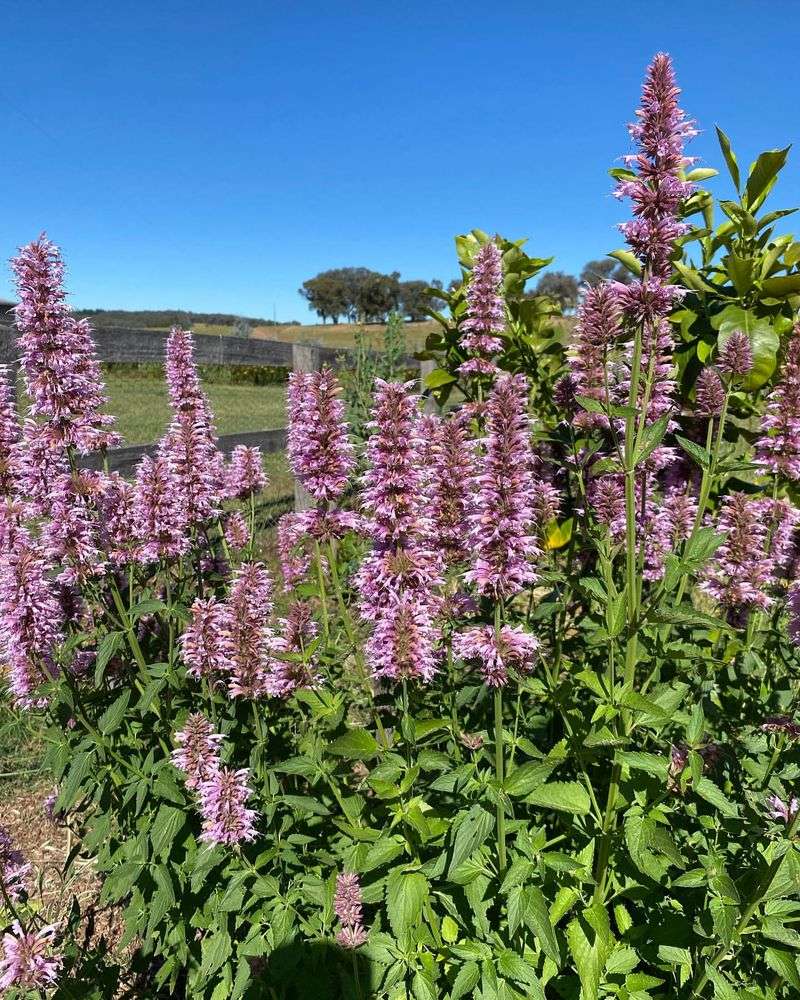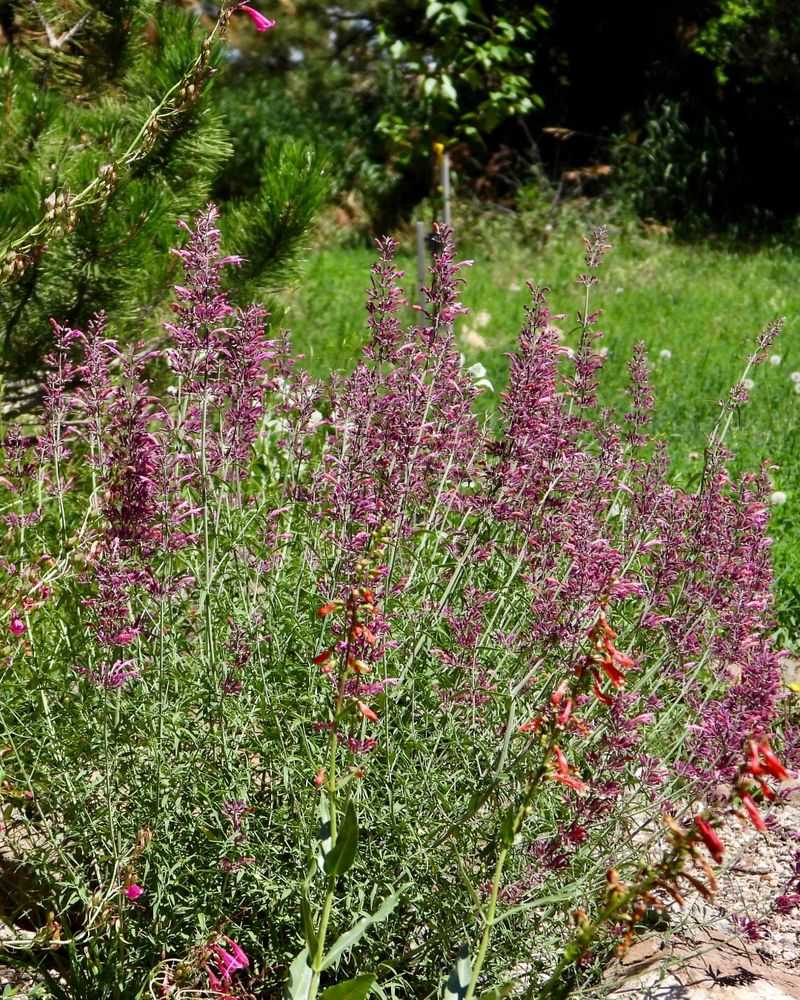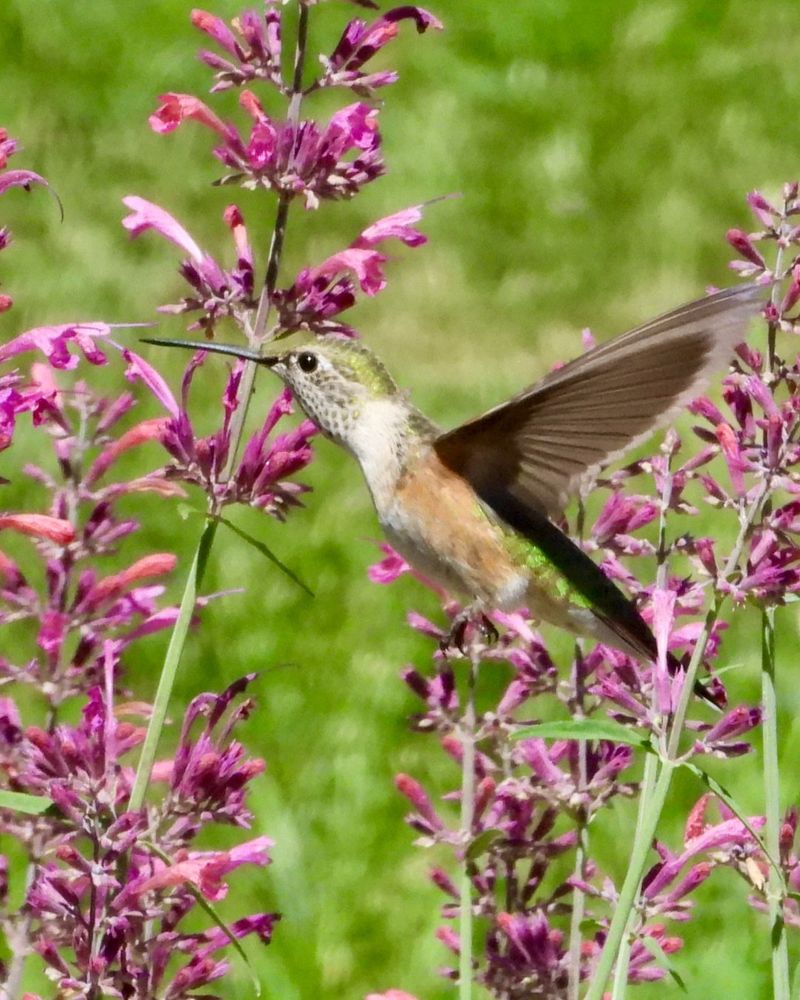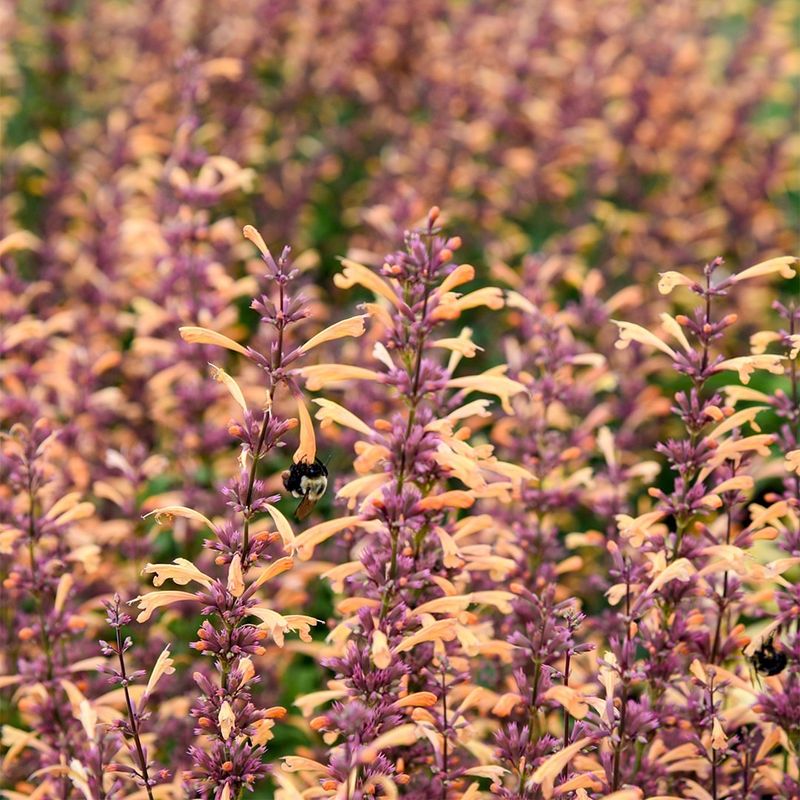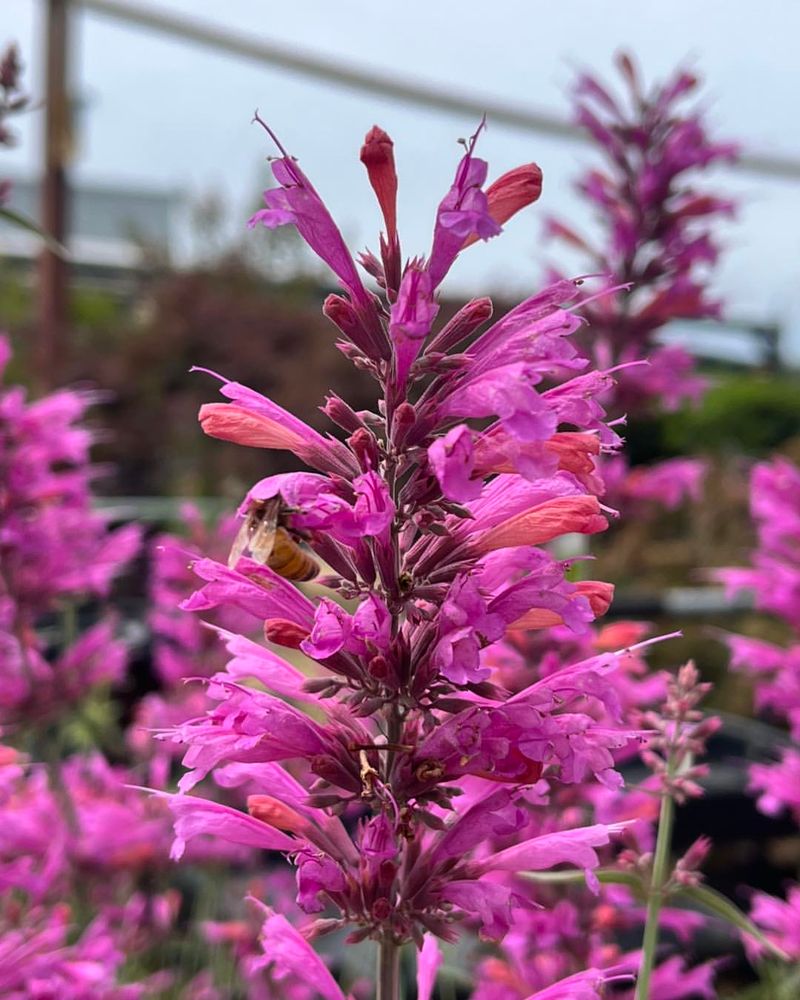Gardening in Palm Springs presents unique challenges due to scorching temperatures and limited rainfall. Agastache, commonly known as hummingbird mint or hyssop, has become a superstar in local drought-smart gardens.
This resilient perennial offers remarkable benefits that make it perfect for our desert landscape while adding beauty without wasting precious water.
1. Thrives In Blazing Desert Heat
Unlike fussy flowers that wilt when temperatures climb, Agastache actually celebrates the heat! Native to arid regions of North America, these tough plants have evolved special adaptations to handle Palm Springs’ intense summer scorchers.
Their silver-green foliage reflects sunlight while specialized oils in their leaves help conserve moisture. Even when other garden plants look stressed, Agastache stands tall and continues flowering through triple-digit days.
2. Requires Minimal Irrigation
Once established, Agastache becomes incredibly self-sufficient. Their deep root systems hunt for underground moisture, meaning you’ll rarely need to reach for the hose. Most varieties need watering just once every week or two, even during summer.
For Palm Springs residents facing water restrictions and high utility bills, these plants deliver gorgeous garden color without draining resources. Many gardeners report their water bills dropping significantly after switching to Agastache-centered designs.
3. Attracts Vital Desert Pollinators
The tubular blooms of Agastache act like neon signs for hummingbirds, butterflies, and native bees. Watch as these tiny wildlife ambassadors flock to your garden, bringing movement and life to your outdoor space.
Many Palm Springs gardeners report seeing rare desert pollinators they’d never noticed before. Creating these habitat islands becomes especially important in our urban desert environment where natural food sources for pollinators can be scarce.
4. Provides Multi-Season Interest
Forget one-hit-wonder plants! Agastache delivers a show from late spring through fall with spikes of purple, pink, orange or blue flowers rising above aromatic foliage. The architectural seedheads even look striking during winter months.
Local garden designer Maria Gonzalez explains: “My clients love how Agastache keeps performing month after month while other plants take summer breaks. The long bloom period means less maintenance and more enjoyment in our extended outdoor living season.”
5. Creates Aromatic Sensory Experience
Brush against Agastache leaves and you’ll release a refreshing minty-licorice scent that perfumes the air. This natural fragrance adds another dimension to desert gardens beyond just visual appeal.
Many Palm Springs homeowners strategically plant Agastache near patios and walkways for this aromatherapy effect. The scent also naturally repels certain garden pests while delighting human visitors. Some varieties even make delightful herbal teas – a bonus harvest from your water-wise landscape!
6. Blends Perfectly With Desert Aesthetics
Agastache’s upright growth habit and textured foliage complement other desert garden staples beautifully. Their vertical flower spikes create dynamic contrast against rounded cacti and sprawling succulents.
The color palette – from soft lavenders to fiery oranges – harmonizes with our iconic desert sunsets and mountain views. Local landscape architect James Peterson notes: “We’re seeing more clients request Agastache because it feels both native and sophisticated, matching Palm Springs’ unique blend of natural beauty and design consciousness.”
7. Stands Up To Challenging Desert Soils
Palm Springs’ alkaline, sandy soils challenge many plants, but Agastache thrives without demanding soil amendments. Their adaptability to poor soils makes installation and maintenance remarkably straightforward.
Local nursery owner Diane Williams shares: “Customers return amazed at how their Agastache flourished in spots where other plants failed. They’re particularly good for those troublesome areas where irrigation is difficult or soil quality is questionable.”
This resilience translates to less work amending soil and fewer replacement plants needed over time.

